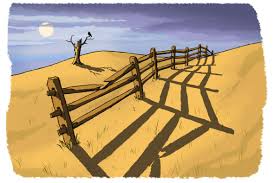5/6 Light and Shadows Unit
This term the 5/6 students are learning about light and shadows as part of our Inquiry topic.
Shadows are formed when an object is placed in front of rays of light. We have learned that the size of a shadow can change depending on how close the light is to the object. Also the type of shadow formed is different depending on the type of object that is casting the shadow.
In transparent (see through) materials – lots of light passes through these objects so if any shadows are formed they are very light.

In translucent materials (some light passes through) – the shadows are darker than transparent materials and can be different colours depending on the colour of the materials.

In opaque materials no light passes through so it creates the darkest shadows. Wood is an example of an opaque material that light cannot pass through (unless there are holes in it). In the picture below the light cannot pass through the wood so it creates a shadow.

Overall, we have learnt a lot of interesting facts about light and shadows in our topic so far and we are looking forward to finding out more about the different properties of light and shadows.